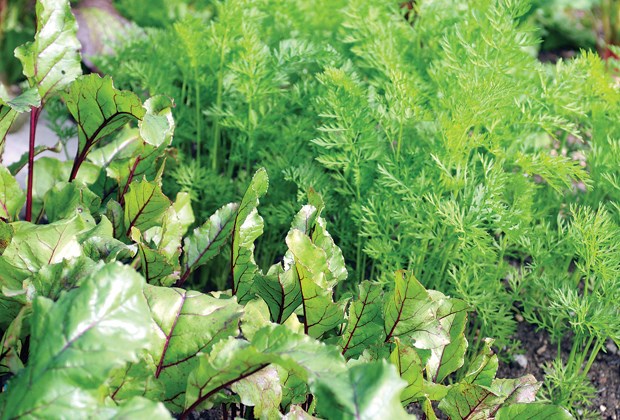The air is cooler but the sun still shines and the soil has reached its warmest temperature of the year, making fall one of the most productive seasons in the garden.
Fall is not the end of the season, it's the start of the planting and division cycle in the garden. One of the great advantages of replanting and reworking the garden's layout at this time of year is the ability to evaluate plant spacing as seen at late summer's peak of maturity. Often, plant spacing needs adjustment from time to time due to vigorous growth, crowding or poor performance. And sometimes when plants are planted hastily and their mature size is not clearly understood the resulting planting can look crowded or off balance.
Another advantage at this time of year is the ability to shuffle plants to obtain better height relationships between co-habiting plants. Those plants too tall or too short for their placement can be relocated to fit better into the overall design. The other advantage is being able to add, replace or remove plants that don't fit the bed's design. Remember that gardens are always in a state of progression and therefore change should be embraced.
Since the soil is warm and the weather is cooling, planting out new plants or transplanting can be done now with little concern of poor establishment. Planting in the fall will allow new root growth to occur before the onset of winter and next spring plants will be prepared to make new growth and add interest to spring's beauty.
I generally do not believe that adding fertilizer or bone meal to the planting hole is necessary at this time of year. And we do not want to force soft lush growth on plants in advance of winter's chilly embrace. It is important to incorporate some form of organic matter to the planting hole because it's the only the chance the plant may have for years to have its root zone enhanced with lifegiving micro-organisms. As well, organic matter builds structure which improves water holding capacity and soil aeration, improves nutrient cycling caused by micro-organisms and increases root zone depth. Those are claims that no chemical fertilizer can make.
Remember when planting to dig the hole wider than the size of the plant's root ball so you have room to make spacing adjustments. Always add manure or compost into the bottom and sides of the planting hole. After backfilling the plant in its new home do not stomp on the soil to pack it in place. Only apply foot pressure gently and lightly to avoid destroying soil structure and compressing the oxygen out of the soil. After planting, mulch the soil's surface and then water the plant into its new home and let nature do the rest of the work. If you are planting trees, no amount of foot compression will hold up a tree, you must install a tree stake outside of the tree's root ball and tie the tree with non-girdling material like ArborTie made for tying trees.
Beyond planting in the fall, now is also a good time for division of most hardy perennials. As long as the perennial in question is not blooming, it can safely be transplanted from now until December.
I usually prefer to let perennials withdraw their green energy from their leaves before division occurs to provide the maximum regrowth potential the following spring. But ultimately the work has to get done so if you cannot wait, simply maintain as much healthy foliage in each division and allow it to remain on the plant after replanting so the plant can withdraw some green energy for next spring. Use the planting guidelines previously mentioned for replanting divisions.
Let's not forget the veggie garden during our fall work. Fall plantings of cold tolerant crops can be highly successful and provide produce well into winter. Assuming you were planning ahead and started your fall crop of plants from seed way back in August, you can safely plant out those little plants now so they can root and get growing before cold temperatures arrive.
I am often asked how to get fall veggie transplants to survive the beating rain and cooler temperatures. I use a homemade row cover made from irrigation pipe and plastic that I place overtop of my fall transplants to help them establish. The cover does not have to be more than a few feet tall.
Cool season root crops include radishes, carrots, onions, garlic, beets and to a lesser extent a late crop of potatoes.
Spinach, lettuce, parsley, arugula and veggies that prefer cooler temperatures can also be planted in pots on the balcony or directly into the garden to yield some lateseason produce for dinner.
Todd Major is a journeyman horticulturist, garden designer and builder, teacher, skills trainer and organic advocate. For advice contact him at [email protected].



